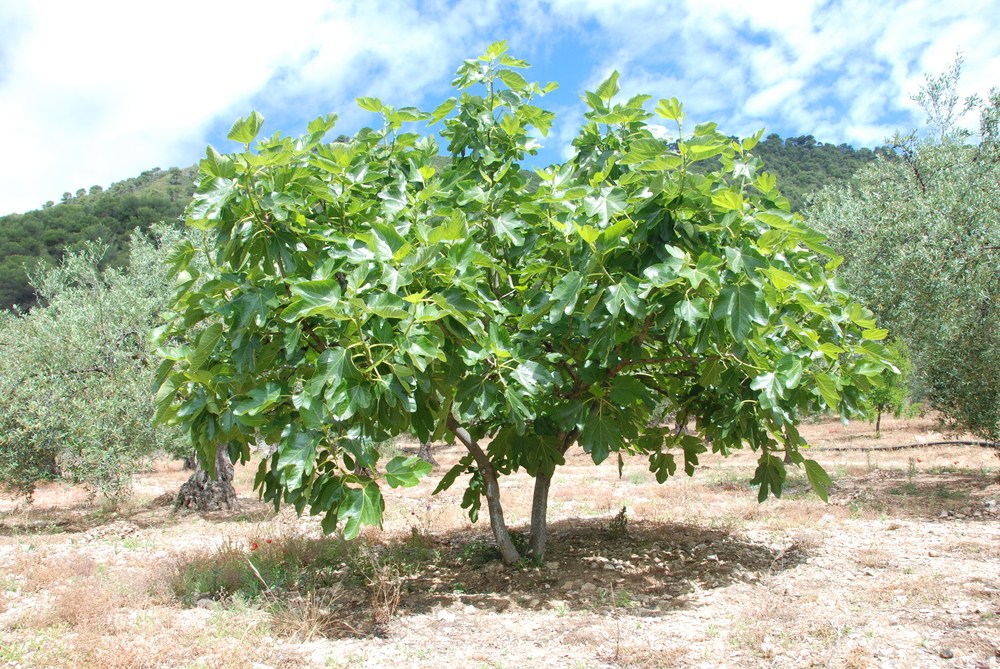A homily for the Third Sunday of Lent 2019. Luke 13:1-9
Just to the right of my home’s front door is a little patch where plants grow.
When I say “little,” I mean it’s just slightly bigger than a sheet of plywood, and, considering its history, you’d be hard-pressed to call it a garden.
When we moved in in the summer of 1988, there were two azaleas with green leaves, something else that was green or brown, a lot of wild onions, and weeds, weeds, weeds.

Full disclosure: I inherited my sainted mother’s blue eyes, but not her green thumbs (see?). With windows to clean and boxes to unpack, I figured the plants were fine by themselves if they hadn’t died yet. And this misbegotten notion was only reinforced the following spring when the azaleas sprouted beautiful pinkish-purplish flowers and daffodils and tulips popped up as well. Surprise!
This little piece of Creation was fine by itself. It needed no tending, right?
Over the years, we randomly transplanted hyacinths and tulips and daffodils we’d received as gifts at Easter – those potted plants with the yellow tin foil on them. But what started as amazing towers of bluish trumpets this year ended up looking like alien life forms in subsequent years.
Yeah, no green thumbs.
But every year, we’d impatiently watch the sturdy, almost juicy, perennial stems blast steadily through the recently frozen earth and reach higher and higher toward heaven, hoping against hope that this year they’d actually look like blooms from a flower shop.

Which is probably how the gardener in today’s Gospel felt. Except he had the good sense to till and weed and fertilize. Though Jesus’ parable doesn’t say it explicitly, and there’s no additional material about this in Luke’s Gospel, we can believe that the fig harvest was plentiful in years to come.
This parable offers us two interwoven themes and a cautionary tale oh-so relevant for the world today.
Faith – belief in God who creates, God who redeems, God who strengthens – needs continual tending, or it will wither and die.
Twice a year, in Advent and Lent, beautifully yet mysteriously linked to the cycles of the earth’s seasons, we receive the gift of quiet reflection and preparation for a magnificent feast.
In Lent, when we are urged to pray, fast and give alms, we can see – all around us – the renewal of life that spring brings. Bulbs awakening; seeds sprouting. Baby birds hatching, cheeping for food. Colts and foals and lambs and calves, wobbly legs and all.
There’s not a scintilla of doubt in any of our minds that all of those newborns need nourishment to grow and thrive. Nourishment and guidance and, of course, love, the love instinctively built into each parent.
We watch them grow: bigger, stronger, faster, everything they were born to be. We watch them mature into the next generation, be they plants or animals, and through their maturity, Creation continues.
Can we say that about our faith?
Can we say that about the faith that Lent challenges us to re-examine?
Is our faith pretty much where it was, how it was, when we learned enough catechism to receive First Communion or be Confirmed?
Or have we grown?
Our faith matures in two ways when we tend it as a master gardener would.
The personal aspects of our faith, our loving, interactive relationship with our Triune God, can grow as we spend time with Holy Scripture, with the lives of the saints and the writings of deep thinkers. When we pray.
Our faith, as we each understand it, grows when we look deeper into the teachings of the Church in an effort to see their significance not only 2,000 years ago but every year since. To see how they have remained significant, have matured, as our world has.
A mature faith knows that we have to work on our relationship with God in much the same way we continually work on our other relationships: spouses, partners, friends, co-workers, the neighbors we love as ourselves.
The personal aspects of faith blend and transform into a communal faith when we gather for the Eucharist, when we pray together, when we live the way Jesus showed us, asked us to, when in this season of Lent we give of ourselves to those on society’s margins, to the poor, to the scorned, to people deemed unlovable. When we donate the most precious gifts of all – time and talent – to those who need them most. When, after we’ve saved people from drowning – that’s charity – we go upstream to keep them from falling in – that’s justice.
Personal.
Communal.
A mature faith.
A mature faith in action.
Such a faith takes time, which the gardener knew 2,000 years ago, which every master gardener still knows, but which our stress-filled, Garden State Parkway daily lives conspire to block out of our minds and hearts.
The prayerful pauses of Lent serve to remind us.
The rebirth that is spring serves to remind us.
Watching the spring flowers grow – well, maybe not watching the grass grow – serves to remind us that all good things come to those who wait.
When it comes to Good Things, what’s better than a mature relationship with our loving God?
And – oh, yeah – except for a spot where either (a) I ran out of bulbs or (b) the squirrels ate them in September, our little patch now qualifies as a garden.
May that be said of all our lives in faith.



